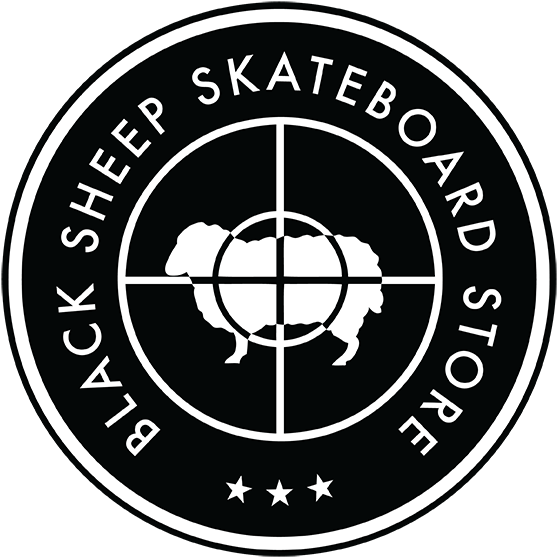A Guide to Buying Skateboard Wheels
Skateboarding Wheels Buying Guide
Skateboard wheels come in sets of four and require eight bearings (sold separately) to properly function. Two bearings are embedded into each wheel which then allows it spin freely on the axle of a truck.
Skateboard wheel size is always measured in diameter by millimetres and the density of a wheel is measured in durometer on an ‘A Scale’ or ‘B Scale’ reflecting the hardness of a wheel.
We believe 52mm wheels are a perfect starting point alongside an 8” board and 139, or equivalent, sized trucks. However, wheels come in many shapes, sizes and colours and like everything else in skateboarding - personal preference is key.
What size wheels should I ride?
Skateboarding wheel sizes generally range from 48mm to 60mm and different sizes are better suited to certain types of skateboarding or terrain.

Your choices in skateboarding equipment and hardware will develop over time but here’s a rough idea of how different sized wheels are best suited:
Small [48mm – 51mm wheels]
Smaller skateboarding wheels are suitable for skating flatground. Wheels under 50mm were popular throughout the 1990s but now most wheel companies begin sizing at 50mm.
Small skateboard wheels are more prone to getting stuck in cracks or rocks however as they provide more space between the wheel and board the likelihood of getting wheel bite is reduced.
Medium [52ml – 54ml wheels]
Wheels of this size are suitable for any type of street and transition skateboarding. All of the wheel brands that we carry make wheels within this size range in a variety of durometers of and styles and we recommend starting with a 52ml wheel when building your first complete skateboard.
Large [55ml – 60ml wheels]
Bigger wheels have a greater surface area which provides a more stable set up alongside. More contact with the ground also makes it easier to maintain speed and for these reasons ramp and vert skateboarders usually favour bigger wheels.
Although they can affect the weight of a skateboard, and risers may be required to reduce the chance of wheel bite, larger wheels are less likely to be caught in cracks or small objects.
Cruiser, Longboard & 60ml + wheels
Wheels above 60ml are usually of a very low durometer allowing for a smooth ride on even the roughest of surfaces. This style of wheel isn’t suitable for performing tricks which is why they are usually found on cruisers, longboards and other non-popsicle shaped skateboards.
What does ‘durometer’ mean?
Durometer is used to determine the hardness of skateboard wheels. They are traditionally measured on an ‘A Scale’. This 100 point gauge is used by most manufacturers however also use the B Scale of durometer which measures 20 points lower than the A Scale. For example, wheels that are 100a match the hardness of a 80b wheel.
Low durometer wheels are softer, grip more and provide a smoother ride while high durometer wheels are harder with less traction and allow for a more natural sense of speed when riding.
Most skateboard wheel companies provide a range of durometers and formulas that are clearly aimed towards certain types of skateboarding. For example, Bones STF and Spitfire Formula Four 101D are hard wheels geared towards street skating whereas Bones SPF and Spitfire Formulas Four 99D model wheels are better appropriate for transition and ramp skating.

Shapes and types and of skateboarding wheels.
All skateboard wheels serve the same obvious purpose but there are many different shapes and sizes available to choose from. At Black Sheep, we always recommend checking out a product in store where our staff are always happy to help and offer advice, but here’s an overview of the variety of wheel shapes we stock:
Normal/Standard
A ‘normal’ shaped skateboard wheel features a slim contact area (where the wheel meets any surface) alongside slightly curved bevelled edges. This style is offered by every wheel brand that we carry and some wheel brands use one shape across their entire range.
Conical
Conical skateboard wheels have a wider contact area and sidewalls that cone inwards very slightly. This can be useful for skating ramps as they allow skateboarders to lock into coping easier.
Radial
Radial skateboard wheels are the opposite of conical. They have more robustly bevelled edges than standard shaped wheels alongside a greater contact area. This provides more surface between wheels and surfaces providing a smoother ride even in the hardest of durometers.
Core
Skateboard wheels with a ‘core’ feature a separate inner area, usually made of plastic, to host bearings. Sometimes the core will resemble spokes within a bicycle wheel whereas others may be a more subtle. They are designed to provide a softer durometer wheel without compromising the bearing’s stability and can be lighter than other skateboard wheels.
Cruiser
These wheels have a very low durometer to provide a smooth ride. They are not usually intended for skateboarding that involves tricks and can be found on vinyl cruisers, old school setups and longboards.

What are skateboard wheels made from?
Skateboarding wheels are made from polyurethane. Until the development of urethane wheels in the late 1960s skateboarders relied on using roller-derby or clay wheels to keep them rolling. After the introduction of urethane it quickly became the industry standard material for manufacturing skateboard wheels and the rest is history!
What are flatspots?
Flatspots are literal flat areas of a wheel that develop through use. Some can be noticeable and some can be almost invisible but with over 50 years of history and knowledge to draw on, skateboarding wheel manufacturers constantly work to develop flatspot resistant formulas and provide better quality wheels.

Flatspots do not mean that your wheels are faulty and are a natural part of skateboard wear and tear which occur with general use, it can occur when getting caught on something that causes a skateboard to move without the wheel turning ie stones glass etc and also by performing powerslides.

